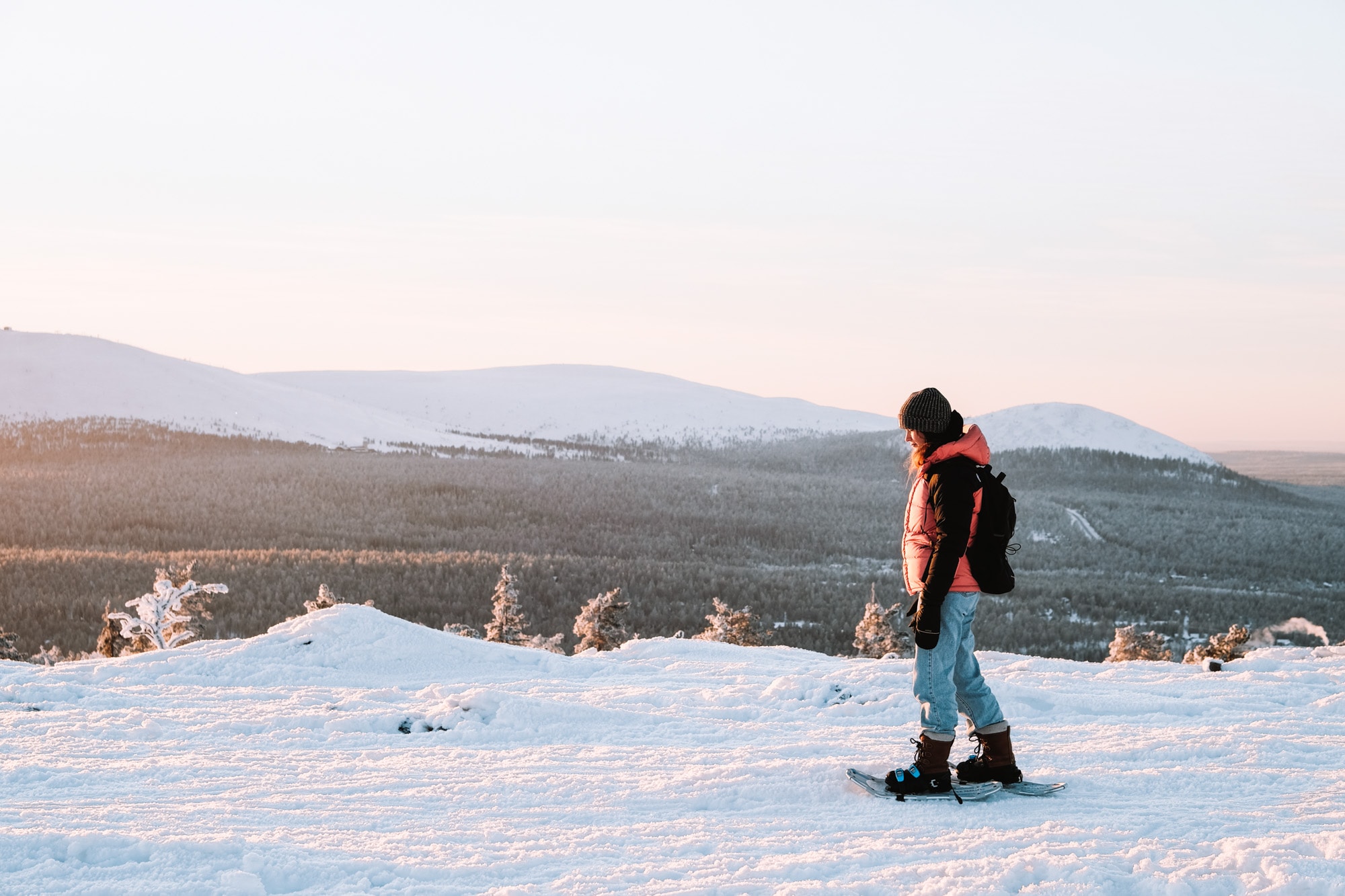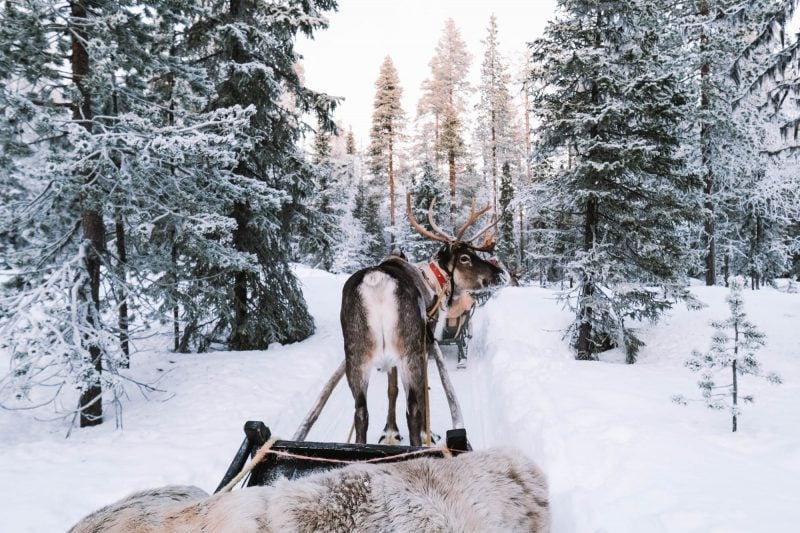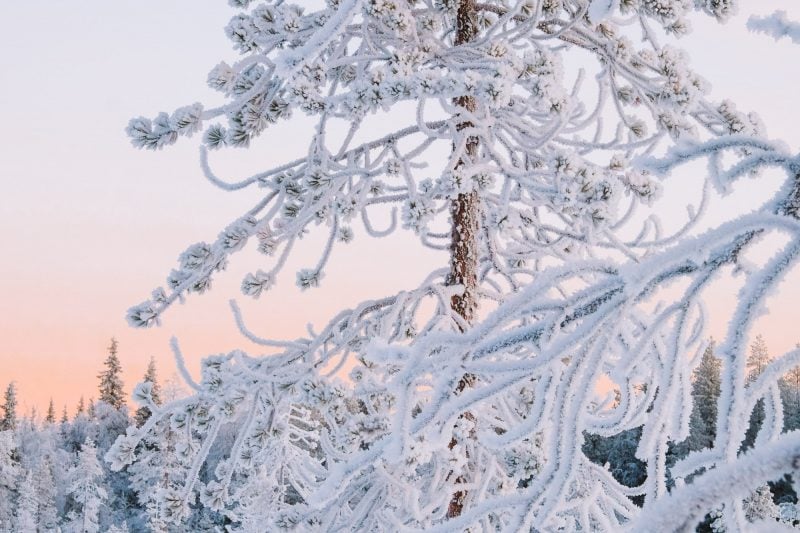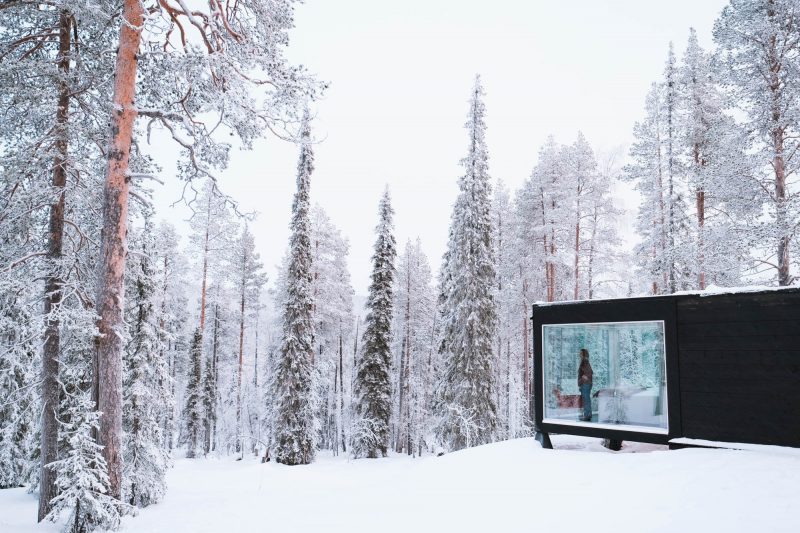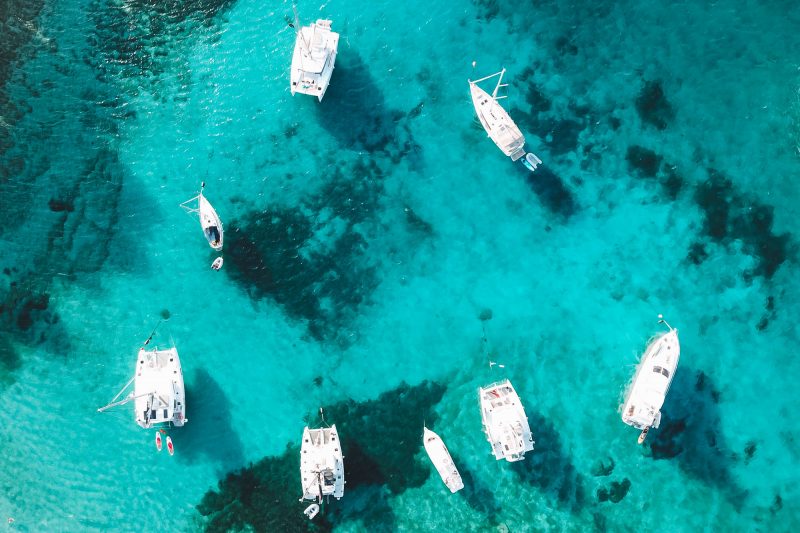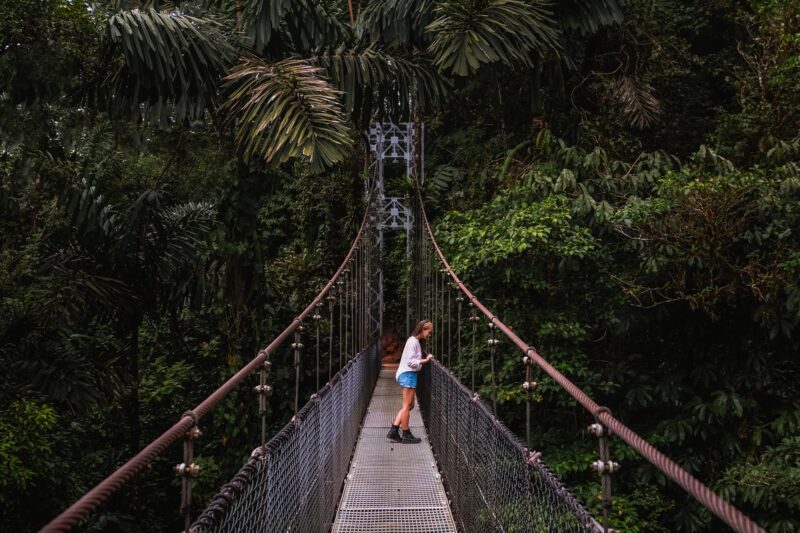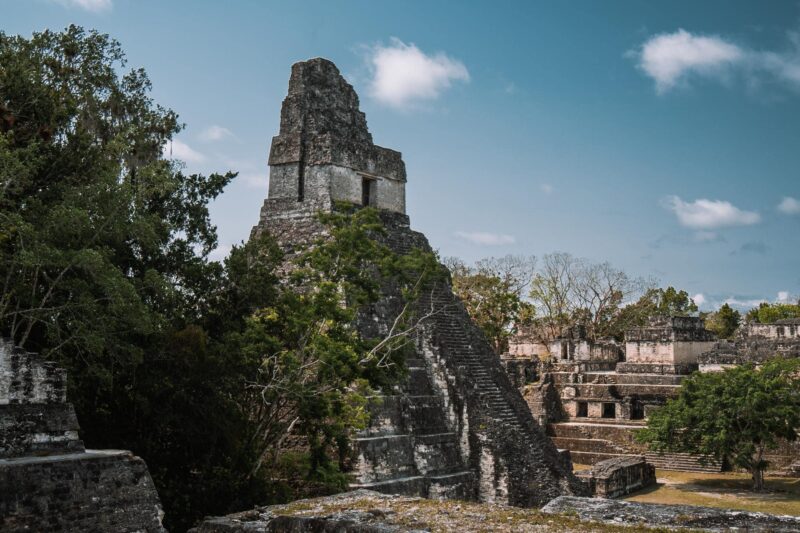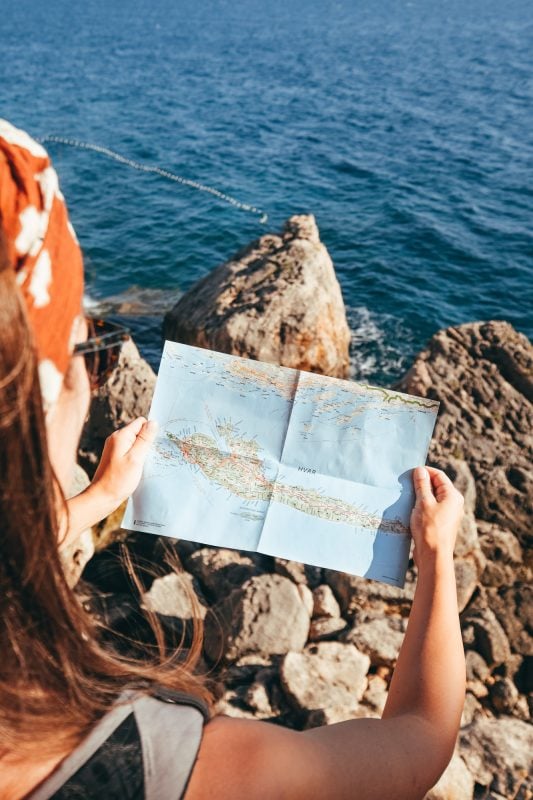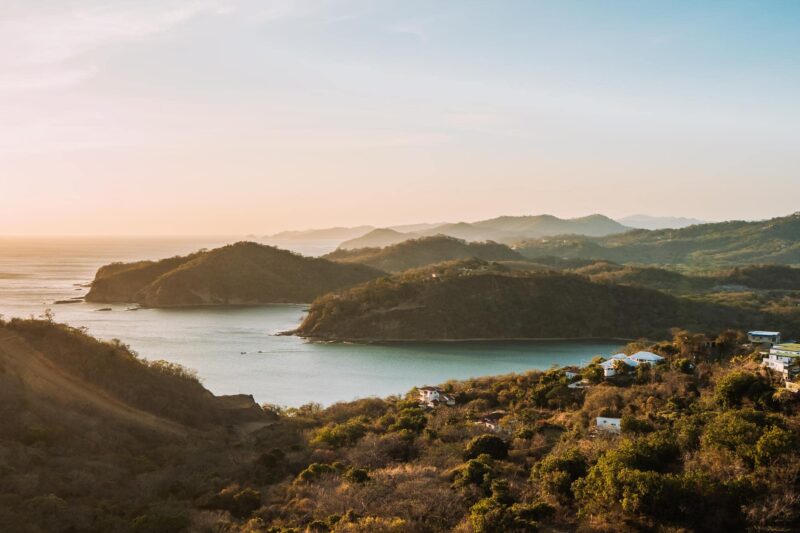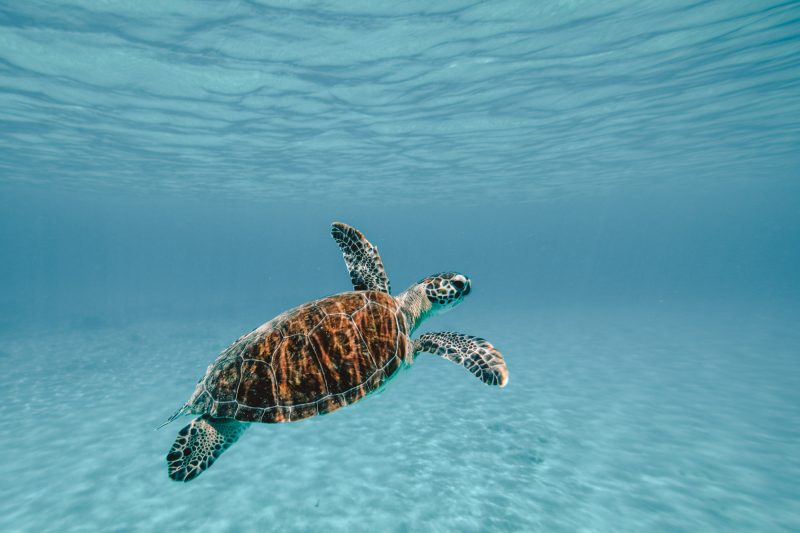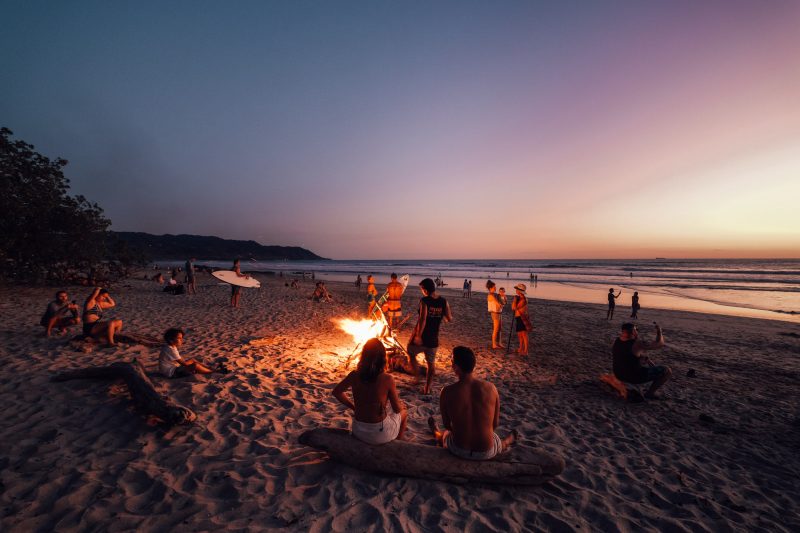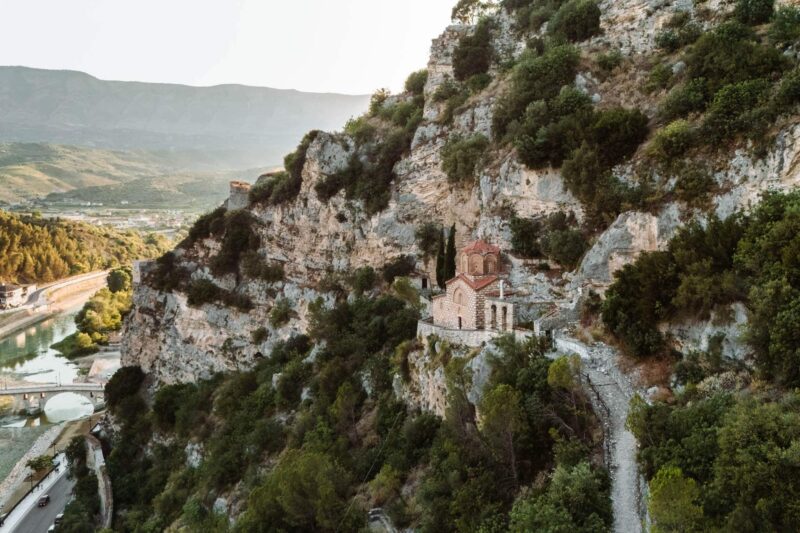If you’re going to Lapland in winter, be prepared for cold temperatures. This packing list for Lapland will help you with that. It may not always be the case, but temperatures in Lapland can be extremely low. During our week with Lapland Travel, we experienced a day with a temperature of -31°F (-35°C). If you’re not dressed warmly enough and feel cold, you won’t be able to fully enjoy your time in Lapland. Such a shame, of course! Here, we share a comprehensive packing list and extra tips for Lapland and describe the clothing we wore ourselves during these extreme temperatures.
Note: This packing list does not include the basics like underwear and a toothbrush, but only items that are specific to this destination, such as gloves and a headlamp.

Choose Clothing Made of the Right Materials
If you’re ordering clothing for a trip to Lapland, pay close attention to the materials the clothing is made of. Clothing keeps you warm by trapping warm air close to the skin. When cotton gets wet, it loses its insulation properties because all the air pockets in the fabric fill with water. If you’re walking and sweating, cotton clothing will absorb your sweat like a sponge. When the air is colder than your body temperature, you’ll quickly feel cold because your cotton clothing is saturated and no longer provides insulation. Your sweat can even freeze, leading to potential hypothermia. Scandinavians have a saying, “cotton kills,” for this reason. Hypothermia can occur even at temperatures well above freezing. Modal, viscose, rayon, lyocell, and tencel are all manufactured fabrics made from cellulose fibers, and they absorb water even faster than cotton.
It’s also best to avoid clothing made from bamboo. Bamboo is often marketed as a green product with properties similar to wool, but many bamboo fabrics are simply a form of rayon and share its less desirable characteristics. Silk is also highly absorbent and not recommended for cold climates. So, what are good fabrics for cold climates? It’s best to go for synthetic fabrics like fleece. Wool is also an excellent fabric that keeps you warm effectively. While wool can absorb moisture, it has the unique ability to retain air as well. Merino wool, in particular, is very warm and makes for excellent cozy socks.

Clothing Packinglist Lapland
Have you never been on a winter destination trip before? Then there is a good chance that some items on this packing list are not in your wardrobe. That was the case with us, and we ordered almost everything from Decathlon, except for a few things. Here is the list:
– Ski jacket or thick parka
– Ski pants
– Snow boots: buy these one size larger than your normal size. In cold weather, wear 2 pairs of socks, and if your boots are too tight, your feet will get cold quickly. There should be some room for air in your shoes.
– 2 or 3 pairs of thermal pants: on cold days, we sometimes wore two pairs on top of each other.
– 3 or 4 thermal shirts for a week, unless you sweat quickly.
– 2 fleece vests
– 2 warm sweaters to wear under your fleece vest in extreme cold.
– 1 or 2 sets of ‘normal’ clothes to go to a restaurant or café.
– A few cotton t-shirts to wear indoors under sweaters.
– Indoor socks: thin socks that are preferably made of wool.
– 3 pairs of thick woolen socks: it is worth buying these a bit more expensive at Bever because they are of good quality and keep your feet warm.
– Sports bra: nice for active activities such as cross-country skiing, skiing, and fat biking.
– Buff or balaclava: we found the thin balaclava very comfortable as it provides extra coverage for your head and face in the wind.
– Thick hat that covers your ears well.
– Waterproof mittens: gloves can also be used, but mittens keep your fingers together and therefore keep them warmer.
– Thin gloves: wear these under your mittens so that your fingers don’t get very cold right away when you want to take a photo or have a drink.
– Swimwear for the sauna or ice swimming.
– Slippers: also for the sauna.
Through Lapland Travel, you can rent a warm overall and thermal snow boots for the whole week for $42 per person. This is highly recommended if you don’t have proper snow boots, a ski jacket, and ski pants. However, the overall can be bulky and awkward for activities that require movement. Therefore, we recommend bringing a thick jacket and waterproof pants for the more active activities.
Other Useful Items for Your Lapland Packing list:
- Hand and foot warmers: These pouches are placed inside your shoes and mittens, providing 5 to 6 hours of warmth. Perfect for the coldest activities!
- A sturdy and comfortable backpack
- Sunglasses for when the sun is bright and reflecting off the snow
- Thermos flask: Keeps hot drinks nice and warm
- A few fun games, as it gets dark early in Lapland
- A good book or e-reader
- Hammam towel for the sauna
- Driver’s license, as you need to show it for snowmobile driving
- Power bank, as the cold temperatures can quickly drain your phone’s battery
- An extra battery for your camera is also useful for the same reason
- Body lotion, day cream, hand cream, and lip balm, as your skin can get very dry from the cold
- Headlamp for the Northern Lights expedition
- Tripod to capture the Northern Lights in photograph
- With these additional items, your Lapland experience will be even more enjoyable and comfortable!

Our Own Packinglist For Lapland
In Lapland, temperatures can vary greatly from day to day. During our one-week stay, we experienced temperatures ranging from -31°F to 28.4°F (-35°C to -2°C). How you dress depends on the temperature of the day, but it also heavily depends on your planned activities. If you’re engaging in a sporty activity like snowshoe hiking or cross-country skiing, it’s important not to overdress as you may start sweating from the physical exertion. Sweating can cause moisture to freeze, leading to a drop in body temperature. Always remove a layer if you notice you’re starting to sweat. On the other hand, if you’re not doing any sporty activities, such as visiting a reindeer farm, going on a husky safari, or snowmobiling, you should dress more warmly as you’ll be less active and may get cold quickly.
Ensure you’re always prepared for extremely cold conditions. Here’s what we wore during a non-sporty activity:
– Rented overall (ski pants and ski jacket can also be used)
– Thermal snow boots
– 2 pairs of woolen socks
– 4 pairs of indoor socks
– 2 thermal pants
– Ski pants
– Jeans for the journey to and from Lapland
– Thermal shirt
– 2 fleece vests
– 1 thick sweater
– Thin balaclava
– Warm hat
– Thin gloves
– Waterproof mittens
– Hand and foot warmers
By dressing accordingly, you can stay comfortable and enjoy your time in Lapland, no matter the temperature or the activities you choose to do!
During a sporty activity where we were active and in motion, we wore the same clothing as mentioned before, but without the rented overall.
Extra Tips to Keep Yourself Warm During Your Stay in Lapland
Nothing is as annoying as getting cold, as it can hinder your enjoyment of all the beauty in Lapland. Below are some quick tips to stay warm in extreme cold:
1. Don’t skimp on clothing. Good clothing may be expensive, but it’s worth every penny.
2. Squeeze your hands regularly to promote good blood circulation in your fingers.
3. Wiggle your toes frequently to keep the blood flowing in your feet.
4. Stay as active as possible when you’re outdoors.
5. Bring a warm drink in a thermos flask.
6. Always have hand and feet warmers in your bag, just to be safe.
By following these tips, you can ensure that you stay warm and comfortable while exploring the wonders of Lapland!
